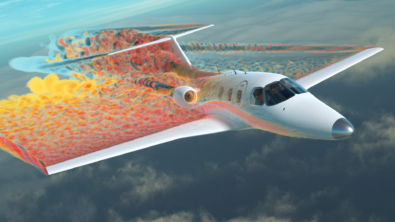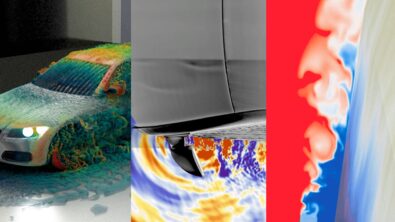CFD on GPU. A seamless disruption with Simcenter STAR-CCM+

Time flies when you’re having fun
With the release of Simcenter STAR-CCM+ 2406 on the horizon, this will be our EIGHTH release and over two years since our original GPU accelerated CFD functionality was introduced.
Back in Simcenter STAR-CCM+ 2022.1, Stamatina Petropoulou introduced our first CFD on GPU with GPU me up Scotty!, highlighting the potential cost, time and energy savings of GPUs. The blog also summarizes nicely why GPUs are becoming an ever more important part of the HPC landscape when it comes to CFD. Fundamentally, the introduction of GPUs with sufficient High Bandwidth Memory (HBM) was a game-changer in allowing this hardware to be used for CFD on unstructured meshes.
In this short video, I took the opportunity to give some insights into how GPUs can help deliver improvements to simulation throughput and how GPUs fit in an increasingly heterogeneous hardware landscape of CPU, ARM and GPU.
However, for those of you who want something more in-depth than my Product Manager spiel, I would thoroughly recommend the podcast with Petr Kodl, who leads our CFD on GPU development. He provides excellent detail on why GPUs are suitable for CFD, the challenges involved and some insight into our development philosophy. A great way to spend your lunch break if you ask me!
Since that first release, we have had three main objectives with regards to extending our CFD on GPU offering: add more applications, extend supported GPU types, and continually improve performance. Let’s dive into these in a bit more detail.
From Auto to Apollo!
Our original GPU release was aimed at transient, automotive aerodynamics and since then the number of applications that can leverage GPUs has exploded! We can look at aeroacoustics, high fidelity CFD on GPU, aerospace aerodynamics, combustion, gas turbine heat transfer and aerodynamics, multi-time scale heat transfer and even hypersonic applications such as the Apollo capsule re-entry.
With every new release of Simcenter STAR-CCM+ you can therefore typically anticipate even more new physics models to be made GPU-native and of course the 2406 release is no different.
GPU-native solver expansion in Simcenter STAR-CCM+ 2406
Firstly, you can now leverage Grid Sequencing Initialization (GSI) on GPU. GSI approximates an inviscid solution to the flow field which can provide a better initial condition and faster convergence of CFD on GPU using the coupled flow solver. This is commonly leveraged for example in steady-state automotive applications.
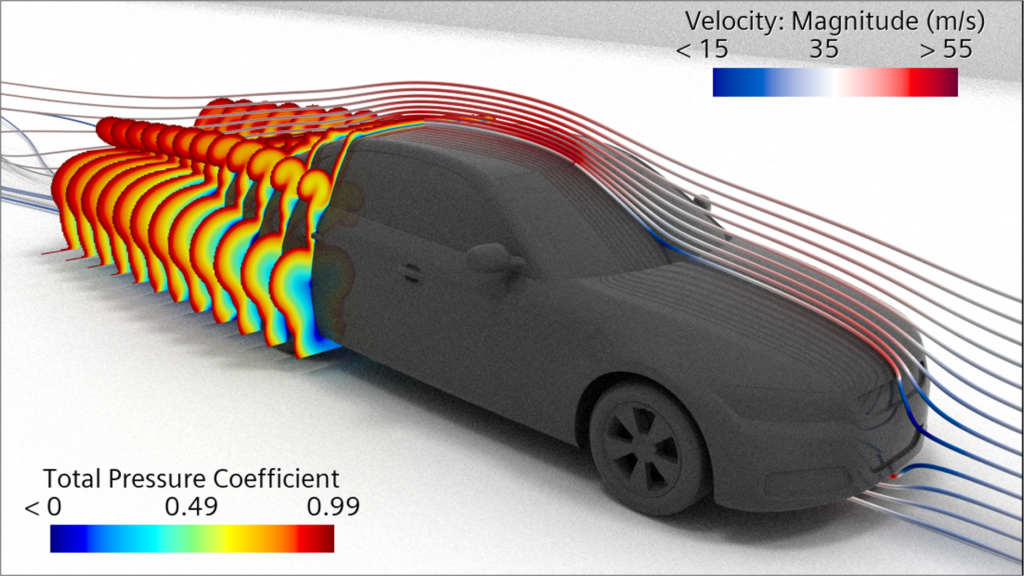
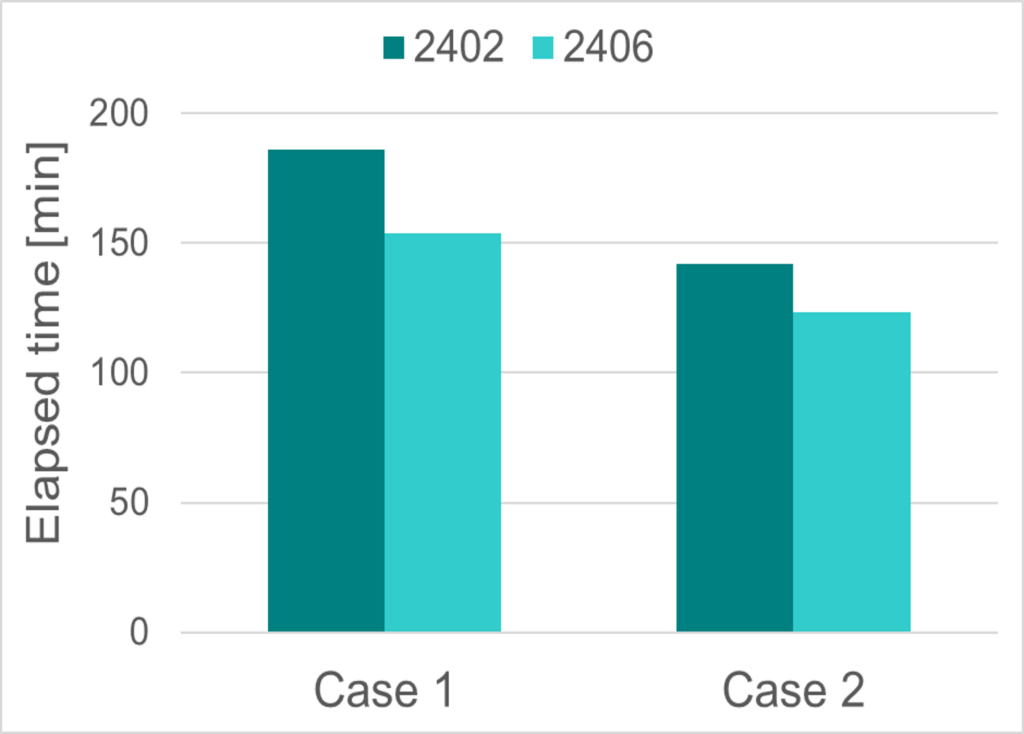
Looking at two industrial automotive examples, it can be observed that performing GSI directly on GPU can save up to 17% of total simulation time, with the GSI process itself 2.5x faster. A nice result that rounds out GPU-native functionality for steady-state vehicle aerodynamics.
Secondly, moving away from vehicle aerodynamics to vehicle thermal management (VTM) then another significant milestone in GPU-native functionality has been reached. In Simcenter STAR-CCM+ 2406, the Surface-to-Surface (S2S) radiation model is now available. This is an essential piece of the simulation puzzle when modelling conjugate heat transfer and VTM . Alongside other pieces introduced in previous releases (Coupled / segregated solvers, Multi-part solids, Mapped Interfaces and more), GPUs can now be used for VTM. Taking as an example the GM Corvette VTM case, we can compare the normalized time per iteration when using 128 CPU cores against 4 GPU cards. In this case the 4 GPUs can deliver up to 4.5x speed up whilst maintaining excellent consistency in results (look at the exhaust manifold seen below).
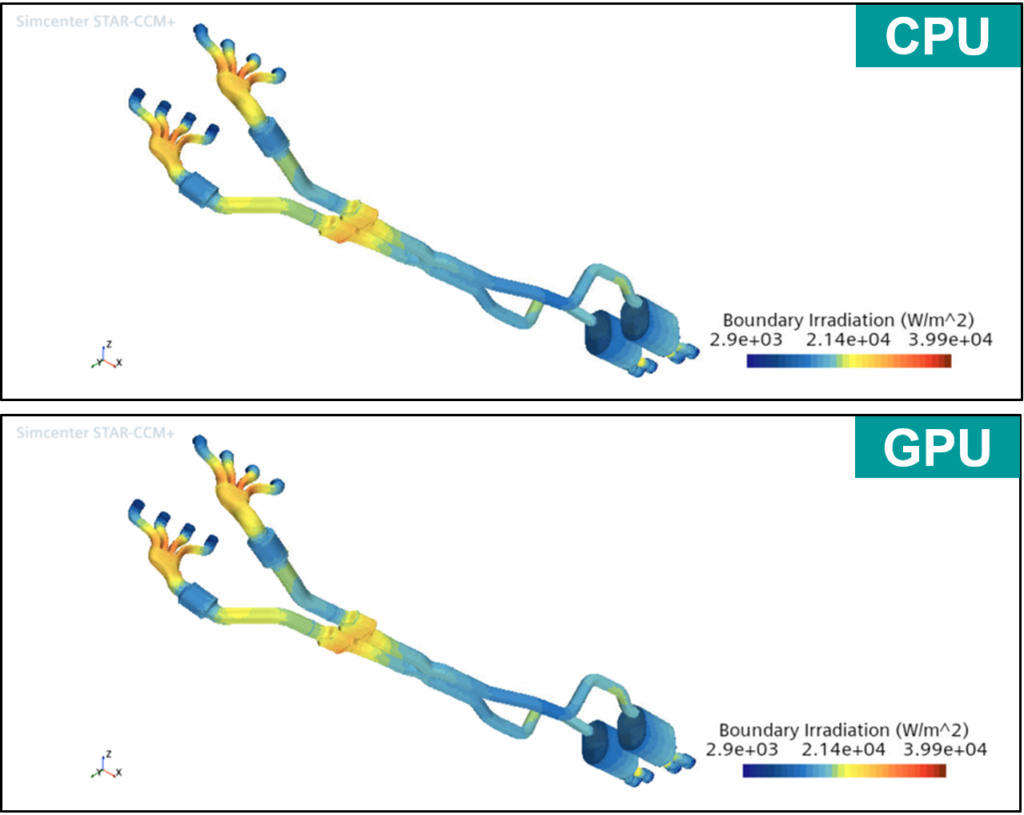
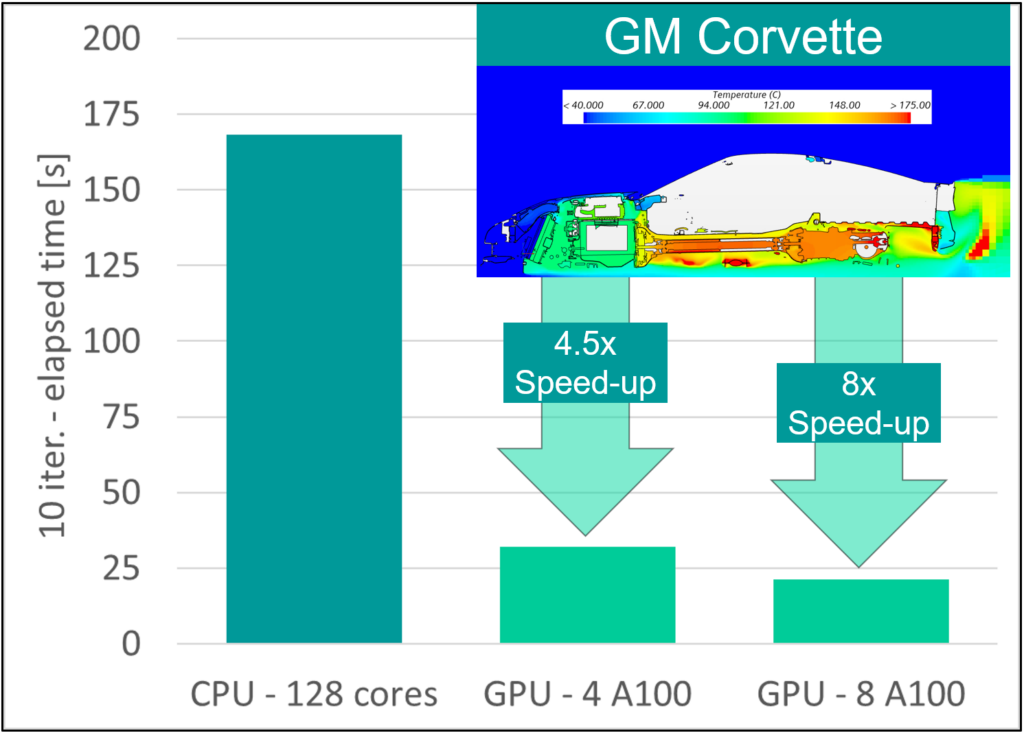
More hardware, more options!
Whilst we work at pace to extend our GPU-native solvers, simultaneously more and more GPU cards enter the market. The rate at which data center and workstation GPUs are being released is quite astonishing. And with every new generation, performance is improving with respect to GPU memory and memory bandwidth. We ensure that Simcenter STAR-CCM+ is able to support new generations of GPU cards and have continuously expanded the range of available GPUs since our initial release:

We recently undertook a collaboration with NVIDIA and Mercedes-Benz to showcase the potential of GPU-accelerated computing for automotive applications. In that study we were able to highlight the link between improved GPU hardware and Simcenter STAR-CCM+ performance:
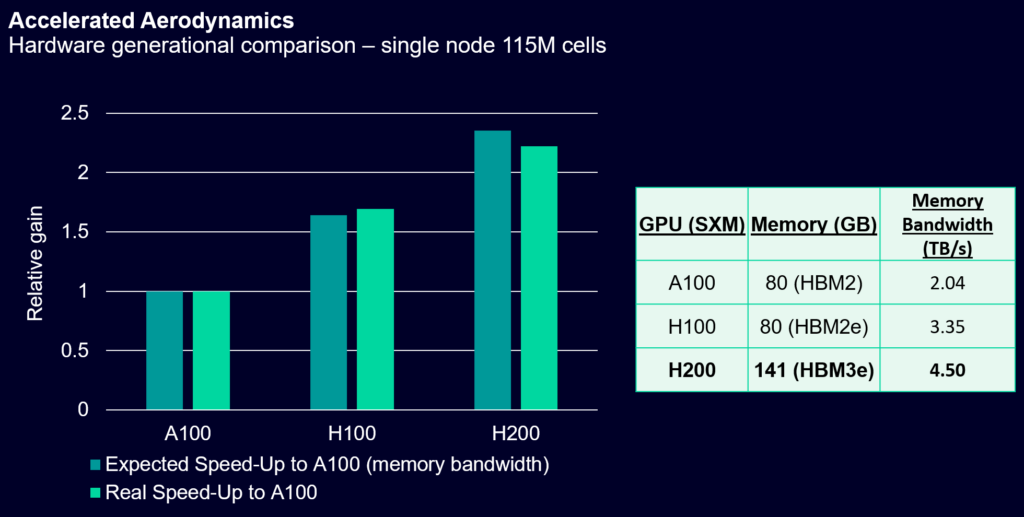
Unsurprisingly, more memory bandwidth is giving more performance!
I also recently spoke to AMD about our efforts to allow Simcenter STAR-CCM+ to leverage AMD GPUs. In Simcenter STAR-CCM+ 2406 we continue to expand our hardware options with compatibility for the AMD Instinct™ MI300 series and the AMD Radeon™ Pro W7000 series.
We are looking forward to continuing close collaboration with GPU vendors to ensure optimal performance on the next generations of GPU such as NVIDIA Blackwell and AMD Instinct MI350.
Of course, Simcenter STAR-CCM+ is a general purpose tool that is designed to run across the full hardware spectrum, CPU (x86 / ARM), GPU (AMD / NVIDIA), on-premise or cloud. Why not explore the CFD Hardware Galaxy to learn more?
Go faster, go further!
So, in the last two years, it can be observed that we have expanded greatly in terms of GPU-native physics and the range of GPUs themselves that can be leveraged. But another cherry on top of this is continued GPU performance improvements from the Simcenter STAR-CCM+ side as well.
These performance improvements aim at ensuring there are no bottlenecks of CPU-GPU data migration during the simulation process, for example when monitoring transient data or key engineering parameters to judge convergence. Since our original implementation of GPU-native solving, we have striven to ensure the full simulation process can be performed on GPU and continue to improve in this area. Alongside this, our team has continually optimized GPU performance. For example, we made the Coupled Flow solver up to 10% faster on GPUs in 2406 and have more improvements for cases using Coupled Energy in the pipeline.
Putting this together with hardware improvements, we can see a combined software/hardware speed on GPU of up to 4x since our original release!
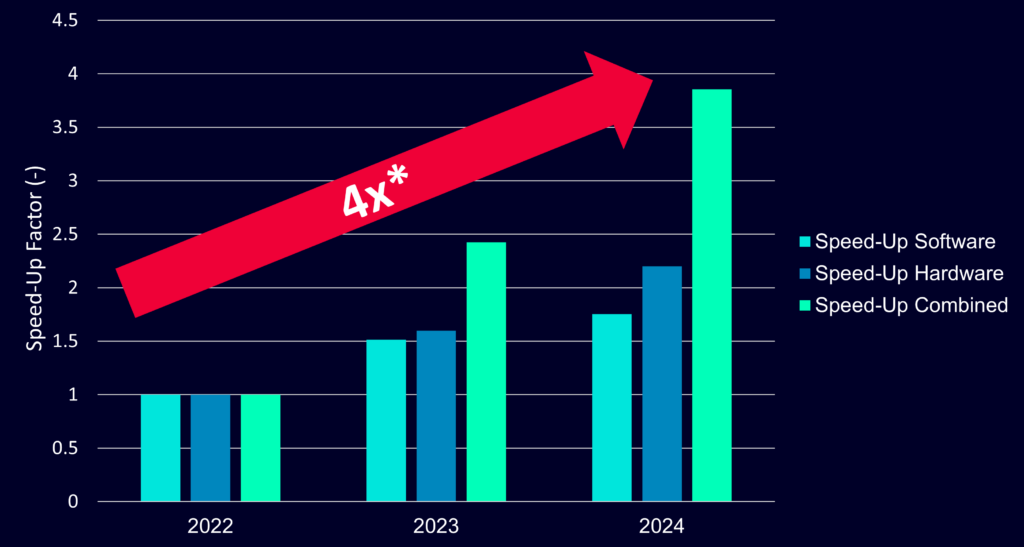
Simcenter STAR-CCM+ on GPUs enters industrial adoption
You don’t have to take my word for it regarding the potential benefits of GPU to accelerate the design process. At our recent Realize Live Europe event we had not one, not two, but three automotive OEMs presenting the benefits of moving their workflows to GPUs.
Another nice example of CFD on GPU used in aeroacoustics (in collaboration with Stellantis) can be found here.
And it’s not just the automotive sector that is benefitting, for example Trek Bicycle discussed their usage of GPUs with Simcenter STAR-CCM+ and in the world of combustion, we collaborated with Siemens Energy to show the benefits of GPUs for design of industrial combustion systems.
If that’s not enough, how about this presentation from DEME leveraging CPU and GPU to enhance sustainable marine solutions and operations. My final pointer is to a webinar hosted by Vlaams Supercomputer Centrum (VSC) where I discussed the potential of GPUs, as well as some practical tips for getting started (I promise this is the last link to one of my own presentations!).
CFD on GPUs – a seamless disruption in a whirlwind two years
So, there you have it, in a whirlwind two years since the first release, we have truly pushed the boundaries of GPU-accelerated CFD. Personally, I’m excited to see how much further we go in the next two years. There’s no doubt in my mind that the role of GPUs for CFD will continue to disrupt traditional workflows, and Simcenter STAR-CCM+ will be there to facilitate a seamless transition.
Don’t wait – start your first CFD on GPU today!
So, it’s never been a better time to try GPUs and unlock the benefits of GPU-accelerated CFD. With Simcenter STAR-CCM+, a single Power Session Plus licence allows you to run on unlimited CPUs or GPUs. Unlike other CAE codes, this means no tiered pricing and no cost variation depending on GPU type.
For all the new GPU capabilities, download Simcenter STAR-CCM+ 2406, out since July 3.
